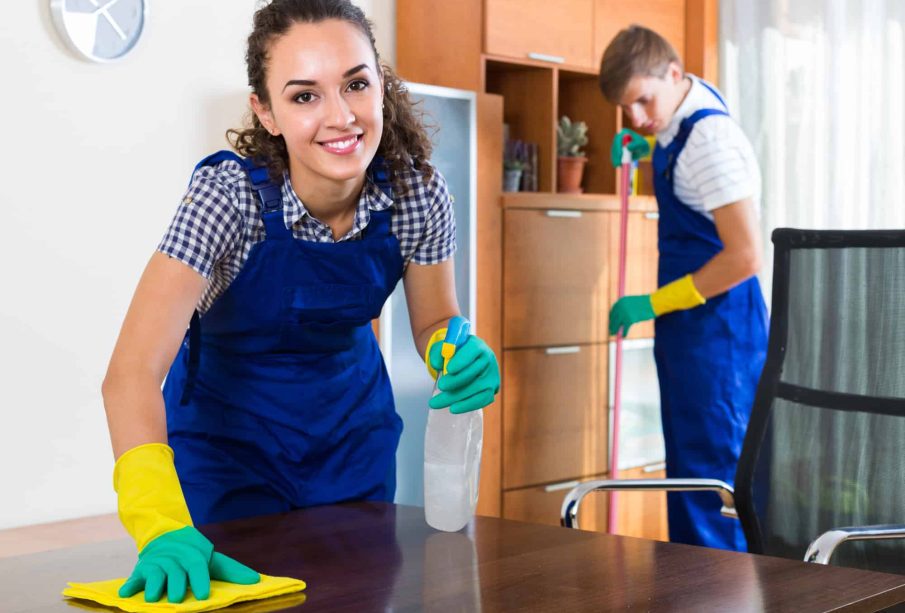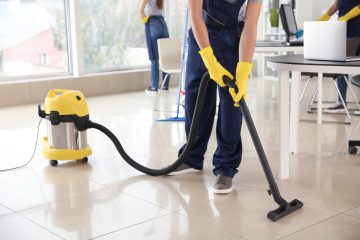How To Clean The Exterior Of Your Home

Maintaining a clean and well-kept exterior is crucial not only for enhancing the curb appeal of your home but also for preserving its structural integrity. Over time, dirt, grime, mold, and pollutants can accumulate on the exterior surfaces, impacting both aesthetics and longevity. In this comprehensive guide, we will explore a step-by-step approach to effectively clean the exterior of your home, covering various materials and surfaces.
1. Assessing the Scope of Cleaning
Before diving into the cleaning process, especially if you’re considering professional cleaning services in Auckland, take a moment to assess the condition of your home’s exterior. Identify the type of surfaces you’ll be cleaning, such as siding, brick, stucco, or concrete. Additionally, evaluate the extent of dirt, mold, and stains present. This assessment will help you tailor your cleaning methods and select the appropriate cleaning agents, ensuring a thorough and effective cleaning, whether you choose to handle it yourself or enlist the expertise of cleaning services in Auckland.
2. Gathering the Necessary Tools and Supplies
To achieve optimal results, assemble the essential tools and supplies for the task at hand. Depending on the surfaces you’re cleaning, you may need:
a. Pressure washer
b. Soft bristle brush or scrub brush
c. Mild detergent or specialized cleaning solution
d. Bucket
e. Hose
f. Safety gear (gloves, goggles, and protective clothing)
g. Ladder (if cleaning elevated areas)
h. Cleaning cloths or sponges
3. Preparing the Exterior Surface
Preparation is key to a successful cleaning process. Begin by removing any obstacles or furniture near the areas to be cleaned. Cover delicate plants with plastic sheets or damp towels to protect them from cleaning agents. If applicable, close windows and doors to prevent water or cleaning solutions from entering your home.
4. Cleaning Siding and Exterior Walls
For vinyl, wood, or aluminum siding, a pressure washer is a powerful tool. Adjust the pressure according to the material to avoid damage. Start from the top and work your way down, ensuring an even and thorough clean. Use a mild detergent or a specialized siding cleaner to break down dirt and grime. For stubborn stains, gently scrub with a soft brush.
5. Cleaning Brick and Stucco
Brick and stucco exteriors require a more delicate approach. A low-pressure setting on the pressure washer is recommended to prevent damage. Use a soft brush or sponge to apply a mild detergent or a brick and masonry cleaner. Work in small sections, allowing the cleaning solution to penetrate and lift stains. Rinse thoroughly to avoid residue buildup.
6. Cleaning Concrete and Driveways
Concrete surfaces, including driveways and walkways, can accumulate dirt, oil, and stains. Use a pressure washer with a high-pressure nozzle to remove surface dirt. Apply a concrete cleaner or a mixture of water and vinegar to tackle stubborn stains. For oil stains, use a specialized oil stain remover before pressure washing.
7. Dealing with Mold and Mildew
Mold and mildew are common issues on exterior surfaces, especially in damp or shaded areas. Mix a solution of water and white vinegar or hydrogen peroxide to eliminate mold and mildew. Apply the solution with a spray bottle or garden sprayer and let it sit for 10-15 minutes before rinsing. For severe cases, consider a commercial mold and mildew remover.
8. Roof Cleaning
A clean roof not only enhances the overall appearance of your home but also extends its lifespan. Use a soft brush or low-pressure washer to remove debris, moss, and algae. Apply a roof cleaner or a mixture of water and bleach to kill and prevent the regrowth of moss and algae. Exercise caution when working on the roof, and consider hiring professionals for safety.
9. Window and Door Cleaning
Don’t forget to give your windows and doors a thorough cleaning. Use a glass cleaner for windows and a gentle detergent for painted or wooden doors. Wipe down frames and sills to remove accumulated dirt and grime. For hard-to-reach areas, consider using an extendable window cleaning kit or hiring professionals.
10. Final Rinse and Inspection
After completing the cleaning process, give the entire exterior a final rinse to remove any residual cleaning agents. Inspect the surfaces for any missed spots or stubborn stains. Touch up these areas as needed to ensure a uniformly clean appearance.
Conclusion
Regularly cleaning the exterior of your home not only enhances its visual appeal but also protects it from potential damage caused by dirt, grime, and pollutants. By following this comprehensive guide, you can tackle the cleaning process with confidence, ensuring your home remains a source of pride and a welcoming sight for years to come. Remember to prioritize safety, use appropriate cleaning agents, and consider professional assistance for challenging tasks.







